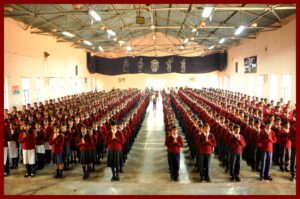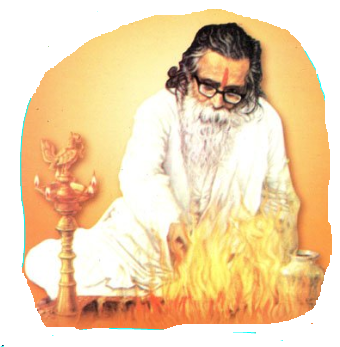
High quality education? yes.
To all sections of the society; yes, yes.
At no cost or at affordable fees; yes, yes, yes.
All this, out of genuine concern or compassion towards the next generation?
Whatever, it needs to be addressed in all sincerity.
Wait, hark! Loud and shrill voices from vested
interests and page-three celebrities! This is Tamil Nadu, you see.
Let us switch to the national scene. There you have the National Education Policy emerging; it aims at “providing universal access to quality education … India’s continued ascent, and leadership on the global stage in terms of economic growth, social justice and equality, scientific advancement, national integration, and cultural preservation.”
To achieve such lofty goals, Government of India considered it fit to tone up the existing systems and strengthen the long-standing institutions – before usuring in new systems/institutions. The expansion of the network of Kendriya Vidyalayas, Sainik Schools and Jawahar Navodaya Vidhyalayas – all run by the Centre – are eye catchers amid the bleak school edu scenario obtaining in Tamil Nadu.
In 2019, the Central Government budgeted for building 50 more Kendriya Vidyalayas (KVs) and 20 schools have been completed. Out of 4 schools sanctioned in TN, one in Iluppakudi, Sivaganga district is ready for admission in this academic year. Thus, starting from 3 schools in 1963 KVs have come a long way with 1,248 schools today. A KV student in a Metropolitan city or a KV student of Arunachal Pradesh gets the same quality of education. Most of the text books are available online.
Around the same time, came the Sainik Schools (SS). These schools enabled rural students of ordinary means also to gain entry into officers cadre of armed forces which was once considered an exclusive club of children of royal families of princely states. Initially, we had only one SS per state. Later based on the need / population and interest expressed by the State government concerned more schools were started in some of the states – for
example 3 more in UP, 1 more each in AP, Bihar and Rajasthan. The number of Sainik schools currently stands at 33. In the current year (2021-22), central government has projected for adding 100 more SSs to be setup in partnership with NGOs.
A retired Group Captain (Air Force) hailing from TN proudly recalls his long years of association with 3 different SSs, in the capacity of Headmaster, Principal and Registrar. He narrated several success stories of SS concept. SS instils discipline, dedication, patriotism, readiness to face challenges in children, besides imparting quality education.
SS contributes nearly 25 to 30% of Officer cadre recruitment. After finishing Higher Secondary, a Student has an option to go for armed forces or to pursue any other avocation. The retired SS official quoted the names of illustrious personalities trained by SSs, who made a mark either in the armed forces or in any field of his choice. Former Governor of Reserve Bank of India, Shri D. Subba Rao (2013-16) is one such shining example.
Success of SS led to the establishment of Navodaya Vidyalayas (NV) – residential schools – in mid 1980s to identify and nurture rural talent. As of March 31 2019, there were 638 schools. Central government approved starting of 23 new NVs in districts having a large population of SC or ST.
Common thread in all of the three is the high quality of education at the lowest cost. Particularly, in case of NVs, Education, boarding facilities, lodging facilities, uniform, text books and stationery are free besides annual excursion trips.
Though all of them were started by Congress governments, Modi Government has taken them forward earnestly. However, in TN either there is lukewarm reception or stiff opposition from political parties mouthing slogans of social justice and swearing to serve the downtrodden sections of the population. Just by parroting slogans of imaginary imposition of Hindi, they hoodwink the commoner and deprive the benefits of KVs, SSs and NVs while
other States eagerly embrace all three and benefit by them.

